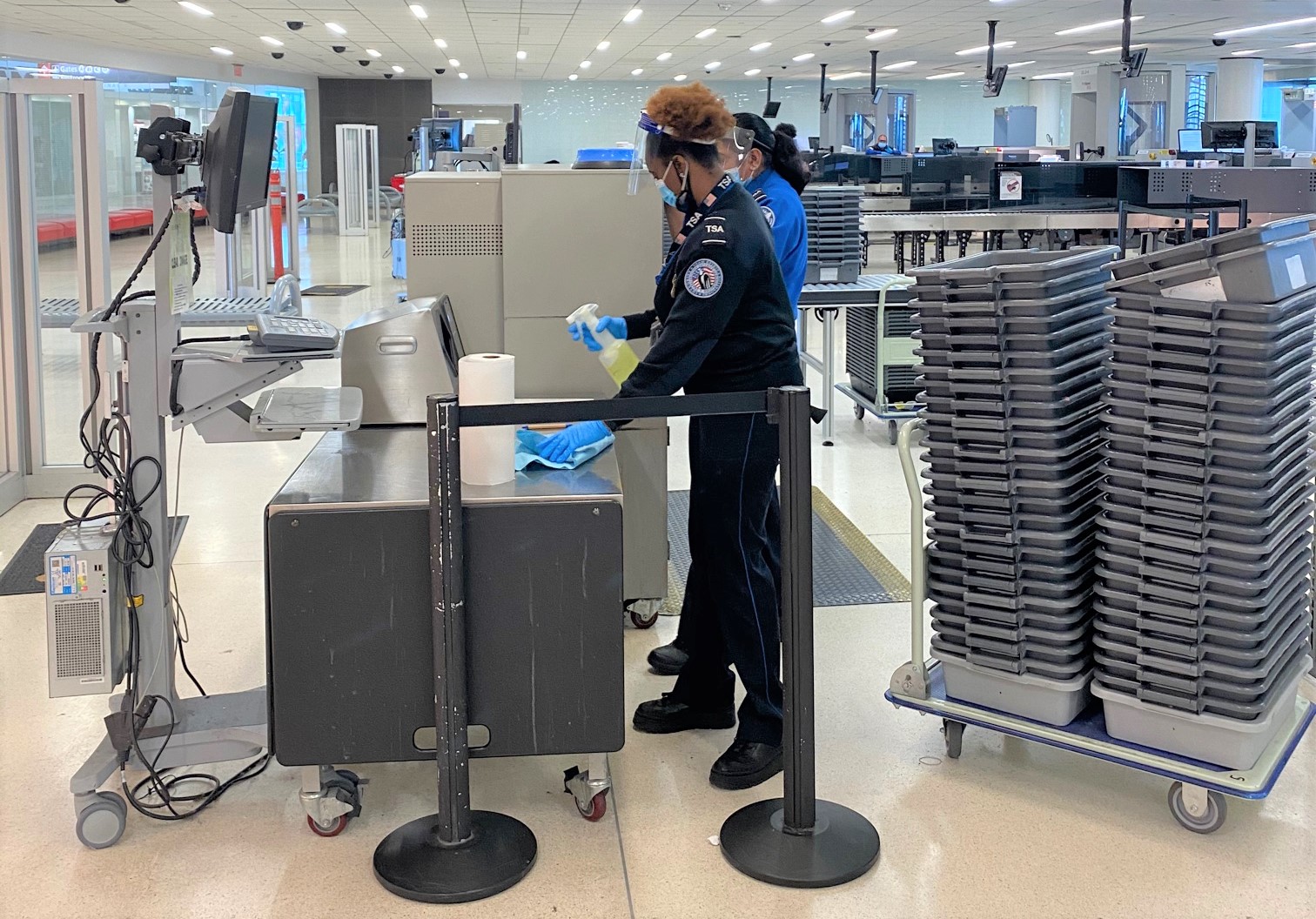PHILADELPHIA – The Transportation Security Administration (TSA) is prepared to handle the increased travel volume this summer and the agency is committed to supporting a healthy and secure environment for airline passengers, TSA employees and airport personnel at Philadelphia International Airport. However, the checkpoint experience will look much different to passengers who have not flown since the start of the pandemic and individuals flying out of Philadelphia should be prepared for those changes.
Nationwide TSA officers are screening approximately 1.5 million people daily, which is a large increase from last year, but still down significantly from 2019, when closer to 2.5 million people were screened daily during the summer. Locally, TSA was screening about 40,000 travelers per day during summer 2019, prior to the pandemic at Philadelphia International Airport and is screening closer to 20,000 travelers per day currently.
Everyone in the airport is required to wear a mask as prescribed by the federal mask mandate when they are in airports, bus and rail stations, as well as while on passenger aircraft, public transportation, passenger railroads, and over-the-road buses operating on scheduled fixed-routes. This means that all travelers must be wearing a mask at TSA airport screening checkpoints and throughout the airport and during their flights. If a traveler does not have a mask, a TSA officer will offer a mask to that individual at the checkpoint.

“The checkpoint screening process looks different today than it did before the pandemic,” said Gerardo Spero, TSA’s Federal Security Director for Philadelphia International Airport. “For starters, travelers should plan to get to the airport two hours before their flight. Upon arrival, travelers will see reminders to socially distance themselves from other travelers while in checkpoint lines. When they get to the travel document checking podium, they will see our TSA officers wearing masks and gloves. Most will be positioned behind new acrylic barriers to reduce exposure and close contact with passengers. Many TSA officers who are not behind acrylic barriers will be wearing face shields or goggles.”
When travelers approach the travel document checking podium, they will be asked to scan their own boarding pass—electronic or paper—to reduce a touchpoint. They also will be asked to remove their masks for a few seconds so that the officer can match the individual’s face to the photo on their ID.
As travelers place their items into bins along the conveyor belt, they will continue to see TSA officers in masks, gloves and face shields standing behind an acrylic barrier offering guidance and answering questions.
TSA officers will be changing their gloves between each pat-down and between each bag search. Travelers may request that a TSA officer put on a new pair of gloves at any time. TSA officers also will be using a fresh swab for each passenger when testing for possible explosive material.
TSA employees will be conducting routine cleaning and disinfecting of frequently touched surfaces and security screening equipment at the checkpoints. The airport is also performing additional cleaning of security checkpoints.

“We are now allowing travelers to bring one liquid hand sanitizer container up to 12 ounces per passenger in carry-on bags until further notice,” Spero said. Passengers can expect that these containers larger than the standard allowance of 3.4 ounces of liquids permitted through a checkpoint will need to be screened separately, which will add some time to their checkpoint experience. Travelers also are permitted to bring individually packaged alcohol or anti-bacterial wipes in carry-on or checked luggage.
To reduce touchpoints, it is recommended that travelers place items from their pockets such as wallets, keys, lip balm, tissues and cell phones into their carry-on bags to be screened instead of putting items from their pockets directly into bins. This minimizes the placing of personal items in a bin that you might hold to your face such as lip balm, tissues and cell phones. It also reduces the chance that travelers will leave something behind in a bin.
Individuals who are planning to travel this summer should consider enrolling in TSA PreCheck®. The popular expedited screening program allows travelers to leave on their shoes, jackets, belts and enables them to keep their electronics and 3-1-1 bags in their carry-on bags.
“TSA PreCheck membership is more valuable now than ever before because it reduces touchpoints during the pandemic and puts travelers in security lines that have fewer travelers and move quicker, which encourages social distancing,” Spero added.

